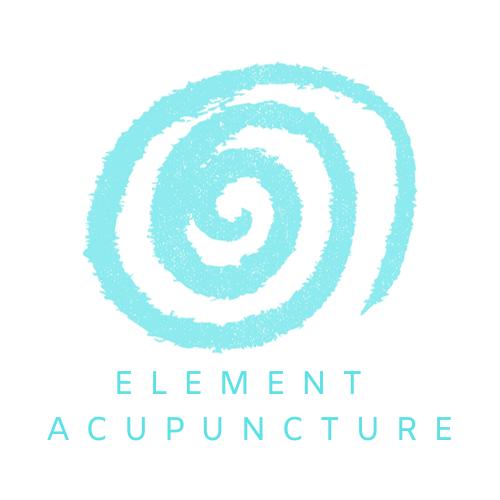What is Energy Healing?
Energy healing is a holistic practice that invites the body's subtle energy fields to restore balance, promote healing, and enhance overall well-being. The approach is based on the belief that physical, emotional, and spiritual health are interconnected and influenced by energy flows within and around the body.
Key Concepts in Energy Healing
Energy Fields: Practitioners believe that energy flows through and surrounds the body, often referred to as "life force energy," "prana," "qi/chi," or "universal energy."
Balance: Health and well-being are associated with a balanced and free-flowing energy system. Blockages or disruptions in energy flow may contribute to illness or distress.
Holistic Approach: Energy healing often addresses the mind, body, and spirit, seeking to harmonize all aspects of a person.
Types of Energy Healing Modalities
Reiki: A Japanese practice where practitioners use their hands to channel universal energy to promote healing and relaxation.
Acupuncture: Based on Traditional Chinese Medicine, acupuncture involves inserting fine needles into specific points on the body to stimulate energy flow (qi).
Healing Touch: A technique where practitioners use their hands to clear, energize, and balance the energy field.
Chakra Balancing: Centers on balancing the body’s energy centers (chakras) to promote harmony and well-being.
Qi Gong: A Chinese practice involving movement, breath control, and meditation to cultivate and balance energy.
Crystal Healing: Uses crystals and gemstones to influence the body's energy fields.
Sound Healing: Utilizes sound frequencies, such as gongs, tuning forks, or singing bowls, to shift energy vibrations.
Benefits of Energy Healing
Stress Reduction: Promotes relaxation and helps reduce stress.
Emotional Balance: Helps manage emotions and release unresolved feelings.
Pain Relief: May alleviate physical pain and discomfort.
Enhanced Healing: Supports the body's natural healing process.
Improved Sleep: Facilitates relaxation, which can improve sleep quality.
Spiritual Connection: Encourages a deeper connection with oneself and the universe.
Scientific Perspective
While energy healing is often considered complementary or alternative medicine, research is still developing in this area. Studies suggest that practices like Reiki and meditation can have positive effects on stress and anxiety, though the mechanisms are not fully understood. Scientific explanations often focus on the placebo effect, physiological relaxation responses, or psychological benefits.
References:
Baldwin AL, Vitale A. (2015). "Reiki and related therapies: A systematic review of physiological effects." Journal of Evidence-Based Complementary & Alternative Medicine.
Zhang Y, et al. (2021). "The role of Qi Gong in health: Evidence and mechanisms." Frontiers in Psychology.
Who Can Benefit?
Energy healing is suitable for most individuals, though it is not a substitute for medical treatment. Always consult healthcare professionals for serious medical conditions.
What to Expect in an Energy Healing Session
An energy healing session is typically a gentle, non-invasive experience designed to promote relaxation, balance, and healing. While practices vary depending on the modality and practitioner, most sessions share common elements.
Before the Session
Consultation:
The practitioner will discuss your reasons for seeking energy healing, including physical, emotional, or spiritual concerns.
They may ask about your medical history, lifestyle, or stress levels to tailor the session to your needs.
Preparation:
You’ll usually lie down fully clothed on a treatment table or sit in a comfortable chair or you can have a virtual session in the comfort of your own home.
The space may be quiet and soothing, with dim lighting, calming music, or aromatherapy to help you relax.
During the Session
Setting Intentions:
The practitioner may set an intention for the session, such as "promoting relaxation" or "supporting emotional release." They might also invite you to set your own intention.
Energy Work:
The practitioner will ask you to focus on your breath, help you to relax. The practitioner may adjust your posture or connect to acupressure points with your permission. They may use their hands to sense, balance, and manipulate the energy field. Depending on the modality, they may:
Hover their hands a few inches above your body.
Place their hands gently on specific areas, such as the head, shoulders, or feet (with your consent).
Use tools like crystals or tuning forks.
Sensations:
You may feel sensations like warmth, tingling, or light pressure, or you may simply feel deeply relaxed.
Some people experience emotional release, such as tears or laughter, as energy blocks are cleared.
Breathing and Visualization:
The practitioner might guide you through deep breathing or visualization exercises to enhance relaxation and focus.
Duration:
A session usually lasts 30–90 minutes, depending on the modality and your preferences.
After the Session
Discussion:
The practitioner may share observations or insights from the session, such as areas where energy felt "stuck" or imbalanced.
They might offer recommendations for self-care, like grounding exercises, journaling, or dietary changes.
Relaxation:
It’s normal to feel deeply relaxed, rejuvenated, or even a little tired afterward.
Some people notice immediate benefits, while others experience subtle shifts over time.
Hydration:
Drinking water is encouraged to help clear toxins and support the body’s natural healing processes.
Common Experiences
Physical Sensations: Warmth, tingling, or a sense of lightness.
Emotional Release: Feelings of relief, calm, or even unexpected emotions as energy blocks are addressed.
Mental Clarity: Enhanced focus or a sense of "lightness" in the mind.
Spiritual Connection: A deeper sense of inner peace or connection to a higher purpose.
Tips for Your First Session
Keep an Open Mind: Energy healing works subtly, so approach the experience without expectations.
Communicate: Let the practitioner know if you’re uncomfortable or have questions.
Rest Afterward: Allow time for reflection and integration after the session.
Contraindications and Considerations
Energy healing is generally safe and non-invasive. However:
It’s not a replacement for medical treatment.
If you have specific conditions (e.g., pregnancy, pacemakers), inform the practitioner to adapt the session appropriately.
By approaching the session with curiosity and openness, you can make the most of this holistic healing experience.

